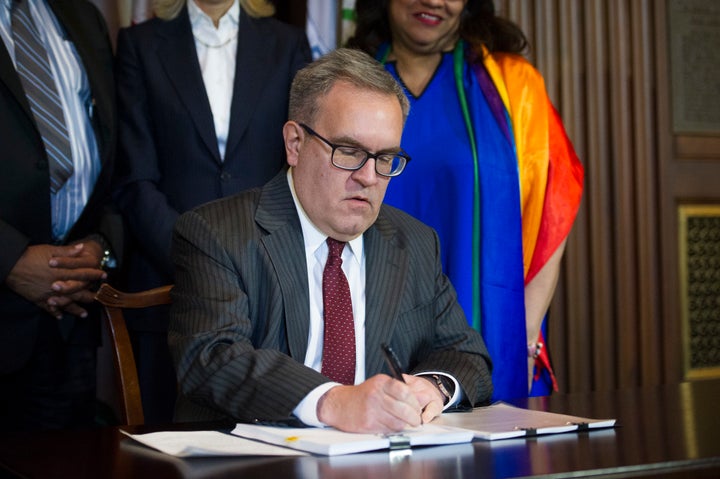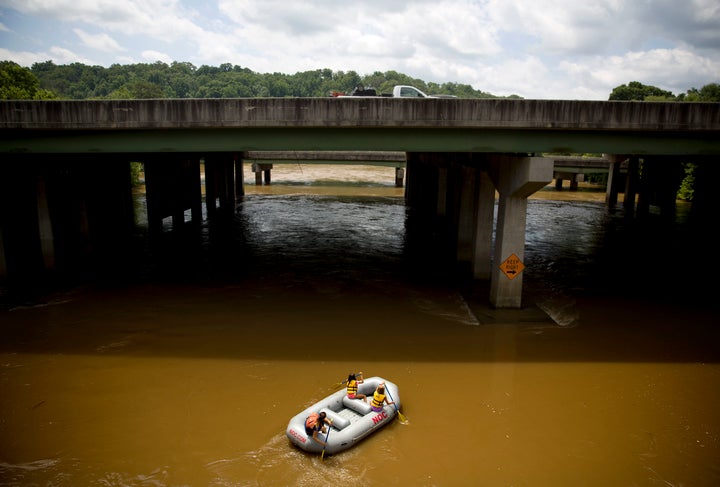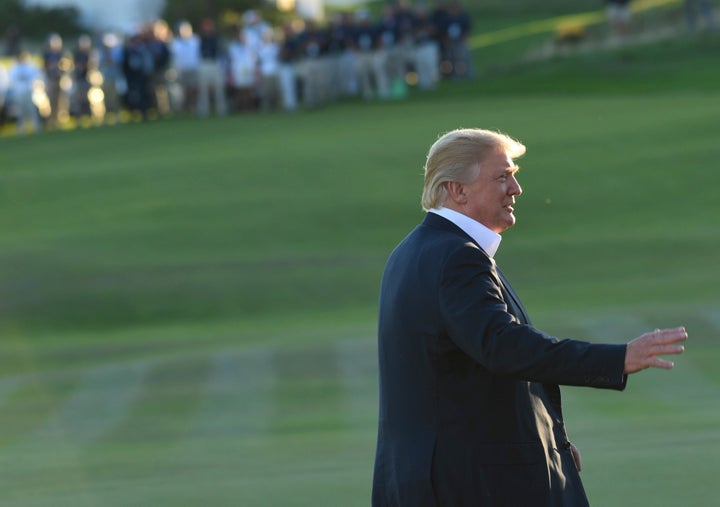
WASHINGTON ― The Trump administration on Tuesday unveiled its plan to replace an Obama-era rule that sought to safeguard drinking water for millions of Americans by extending federal protections to 2 million miles of streams and 20 million acres of wetlands.
Speaking at a press conference late Tuesday morning, Acting Environmental Protection Agency Administrator Andrew Wheeler called the 2015 Waters of the U.S. rule a “power grab.” The Trump administration’s proposal, he said, will replace the Obama-era regulation “with one that respects the rule of law” and “end years of uncertainty over where federal jurisdiction begins and ends.”
“Property owners should be able to stand on their property and be able to tell if they have water that is a federal water without having to hire outside professionals,” he said, drawing a round of applause.
Waters of the U.S., also known as the WOTUS rule or the Clean Water Rule, explicitly defined which waterways were covered under the 1972 Clean Water Act, expanding federal protections to all “navigable” waters and securing the drinking water of more than 117 million Americans.
The new proposal would put strict limits on which waterways qualify for federal protections as opposed to state protections, which are seen as easier for industrial players to challenge. Not receiving protections under the new definition would be groundwater, artificial lakes and ponds, stormwater features, farm ditches, isolated wetlands and ephemeral streams.
“Today EPA and the Army Corps are proposing a new definition that puts and end to the previous administration’s power grab,” Wheeler said.
Wheeler ― who was joined onstage by federal lawmakers, Interior Secretary Ryan Zinke, and deputies from the U.S. Department of Agriculture and the Army ― railed against press reports. In particular, he took issue with reports that the rollback would remove federal protections for 60 percent of the nation’s streams, which he called a “talking point” based on incomplete data from the Obama administration. Wheeler did not provide an alternative estimate.
“Please take a close look at the proposal, not necessarily the news reports,” Wheeler said Tuesday.
Pressed by a reporter about the percent of wetlands that would lose protections under the proposed rule, Wheeler said, “We have not done ― nobody has in the history of the agency ― a detailed mapping of all the wetlands in the country.”
But E&E News reported after the briefing that EPA’s own data shows that approximately 18 percent of streams and 51 percent of wetlands nationwide would be impacted by the proposed change. An EPA official told E&E News that the agency ultimately “determined that the datasets are not robust enough to accurately or precisely depict federally regulated waters.”
The rollback is the latest example of the Trump administration putting industry ahead of public health and environmental protection. And it comes after President Donald Trump’s repeated assurances that he wants “crystal-clean water.”
Last January, former EPA Administrator Scott Pruitt signed an executive order to suspend the Clean Water Rule for two years, giving the administration time to write a replacement.

Farmers and industry groups challenged the Clean Water Rule, arguing it amounted to overreach that would impose costly changes to comply. A federal judge stayed the Clean Water Rule in 2015, and the rule has since bounced between courts. Last January, the Supreme Court sent the case back to a district court. But Pruitt, in the meantime, began the process of repealing the rule outright.
Pruitt hinted at the looming changes during a congressional hearing in April, saying WOTUS determinations “have been so inconsistent, so different in certain parts of the country that ephemeral drainage ditches, dry creek beds, puddles, prairie potholes in North Dakota, you know, are considered waters of the United States, which I believe, looking at the text of the Clean Water Act, clearly was not within the intent of Congress.”
Pruitt resigned in disgrace in July amid mounting corruption accusations and ethics investigations. But Wheeler, his deputy, took over, putting a more-skilled Beltway bureaucrat at the levers of an identical policy agenda. Wheeler even went on Hugh Hewitt’s radio show Tuesday morning to announce the proposal, giving an interview to the same conservative radio host who infamously defended Pruitt without disclosing that the former EPA chief gave his son a job at the agency. Hewitt worked as a Clean Water Act consultant for decades, which made for chummy banter between the men on Tuesday.
“I hope I don’t end up putting you out of business on the consulting side,” Wheeler said, “because my goal for this is so that any property owner can stand on his or her property and be able to tell for themselves whether or not they have a federal waterway on their property without having to hire a lawyer or an outside consultant.”
At Tuesday’s briefing, several Republican lawmakers joined Wheeler in blasting the Obama-era rule as a “power grab” or “federal land grab.” At least two, Rep. Garrett Graves (R-La.) and Rep. Paul Gosar (R-Ariz.), said to expect some media reports to paint the proposal as an attack on the environment and clean water.
Zinke, who as a member of Congress called the Obama-era rule a “water grab” that “will do nothing for conservation, only stifle the economy,” said Tuesday that a lot of decisions affecting water, wildlife and land management are best left to states.
“If you don’t know the difference between the Potomac and the Yellowstone [rivers], maybe you are not in the best position to make decisions on the Yellowstone,” he said. (Neither of those large bodies of water would lose protections under the proposed rule change.)
Zinke compared the EPA proposal to his recent oil-friendly rollback of protections for the greater sage grouse, a ground-dwelling game bird with an elaborate mating ritual. And he thanked EPA and others at the event for “making a stand.”
“This is why we’re all sent to Washington,” he said. “To represent the people. And our government should work for the people, and not the other way around.”

The rollback directly benefits the president’s personal business, easing restrictions on golf-course operators. Under the proposed new rule, Trump’s owned or branded courses ― including two in Florida, three in New York, two in New Jersey and others in Virginia, California, North Carolina and Pennsylvania ― would face fewer rules on pesticide and fertilizer use, according to a report from the consumer watchdog Public Citizen.
“In January, investigating this move should be high up on the oversight agenda of the new U.S. House of Representatives,” Robert Weissman, the president of Public Citizen, said in a statement. “The Congress should investigate the internal debate that surely occurred within the EPA, because it is highly unlikely that career staff believe this move to be scientifically or legally defensible.”
The deregulatory action is likely to face pushback from Democratically controlled states. The California Senate is already considering a bill that would bar the state from weakening environmental rules to match federal deregulations. Wheeler said Tuesday “nothing will change for California’s waters.”
Geoff Gisler, a senior attorney at the Southern Environmental Law Center and head of the environmental nonprofit’s Clean Water Program, told HuffPost the science is clear that wetlands and small streams are “the very best filters for our water.” The Trump administration’s proposal, he said, will likely have “catastrophic” impacts on drinking water.
“They’re basically looking to take us back to a time before the Clean Water Act existed, and really eliminate the protections that have been in place for now close to 50 years,” he said.
While Tuesday’s briefing lasted over an hour, the EPA allowed time for just five members of the press to ask questions.
This has been updated.